Congratulations to this year’s volunteers of the year!
Each year, the National Marine Sanctuary Foundation shines a light on the invaluable role of volunteers to our national marine sanctuaries through its Volunteer of the Year awards. We invited each of the 14 sites in the National Marine Sanctuary System to select one volunteer, or a volunteer team, whom they feel made an outstanding contribution to their sanctuary and the entire sanctuary system, as their site’s Volunteer of the Year. This is our way of acknowledging the efforts of individuals who donate their time and energy to help us protect and conserve America’s underwater treasures to safeguard them now and for future generations.
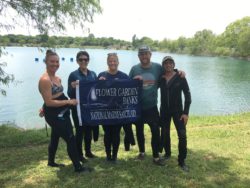
Dive training with volunteers including Volunteer of the Year winner Fernando Calderón Gutiérrez in Flower Garden Banks National Marine Sanctuary. Photo: Emma Hickerson
In 2020, national marine sanctuary volunteers contributed over 61,000 hours across the system, and counted among them, 5,277 citizen scientists who help gather important data that informs conservation and management work at sanctuary sites. These volunteers participate in a wide variety of activities including diving, whale identification, beach cleanups, water quality monitoring, collecting field observations and surveys, acting as visitor center docents, and wildlife monitoring.
Volunteers of the Year are acknowledged specifically for their contributions in the last year but many of them have been actively supporting their site for far longer, and continue to support sanctuaries. Thank you to these Volunteers of the Year, and all the volunteers in the National Marine Sanctuary System, for your dedication and compassion in helping others discover the wonder in our national marine sanctuaries.
This year’s winners of the Volunteer of the Year Award are:
Linda Windsor
Channel Islands National Marine Sanctuary
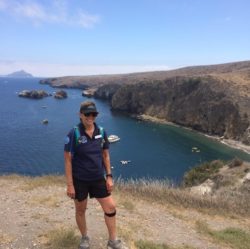 Linda Windsor joined the Channel Islands Naturalist Corps five years ago, enhancing the experiences and safety of thousands of visitors to Channel Islands National Marine Sanctuary and Channel Islands National Park. Linda excels at providing interpretive services to visitors generally on Santa Cruz Island and is always enthusiastic to learn. In 2017 she participated in a five-day sanctuary sponsored National Association of Interpretation’s (NAI) Certified Interpretive Guide training, furthering her skills working with the public. Linda fulfills her duties with passion and as her interest and connection to the island grew Linda expanded her involvement to include overnight duty. In addition to this, Linda helps provide coverage at times when no other interpretive staff are available. She is involved in many aspects of the Santa Cruz Island operation including interpretation, training other volunteers, maintaining interpretive materials and displays, and providing general assistance to campers, day visitors, and island staff. Linda also provides valued support for mainland community outreach events, and she coordinates annual coastal cleanup day activities.
Linda Windsor joined the Channel Islands Naturalist Corps five years ago, enhancing the experiences and safety of thousands of visitors to Channel Islands National Marine Sanctuary and Channel Islands National Park. Linda excels at providing interpretive services to visitors generally on Santa Cruz Island and is always enthusiastic to learn. In 2017 she participated in a five-day sanctuary sponsored National Association of Interpretation’s (NAI) Certified Interpretive Guide training, furthering her skills working with the public. Linda fulfills her duties with passion and as her interest and connection to the island grew Linda expanded her involvement to include overnight duty. In addition to this, Linda helps provide coverage at times when no other interpretive staff are available. She is involved in many aspects of the Santa Cruz Island operation including interpretation, training other volunteers, maintaining interpretive materials and displays, and providing general assistance to campers, day visitors, and island staff. Linda also provides valued support for mainland community outreach events, and she coordinates annual coastal cleanup day activities.
Dick Ogg
Cordell Bank National Marine Sanctuary
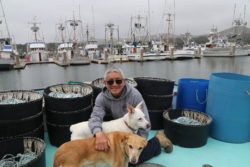 Dick Ogg joined the Cordell Bank National Marine Sanctuary Advisory Council in November 2013, providing a critical link between the fishing community and sanctuary management. As a commercial fishing vessel owner and operator, Dick shares information about commercial fishing, gear innovations, and whale entanglements with gear, and he communicates about the advisory council and sanctuary activities to fishing community stakeholders. Dick believes we can protect the most vital aspects of the ocean and provide food for people with minimal harm to marine resources, and is a vocal advocate on the council and in the fishing community. He volunteered to be a member of California Dungeness Crab Fishing Gear Working Group to reduce the entanglement of whales in fishing gear. Due to his influence, the Bodega Bay crabbing fleet was the first port to recommend delaying the opening of crab season to limit whale entanglement in crab pot lines. He is also a leader to improve sanctuary habitats by recovering lost traps and testing new quick-release equipment. Dick participated in sanctuary overflights to look for whales, and used his boat and crew to retrieve crab pots abandoned in the sanctuary. He advocates for affordable, common sense strategies that will reduce the risk to whales while preserving the crab fishery.
Dick Ogg joined the Cordell Bank National Marine Sanctuary Advisory Council in November 2013, providing a critical link between the fishing community and sanctuary management. As a commercial fishing vessel owner and operator, Dick shares information about commercial fishing, gear innovations, and whale entanglements with gear, and he communicates about the advisory council and sanctuary activities to fishing community stakeholders. Dick believes we can protect the most vital aspects of the ocean and provide food for people with minimal harm to marine resources, and is a vocal advocate on the council and in the fishing community. He volunteered to be a member of California Dungeness Crab Fishing Gear Working Group to reduce the entanglement of whales in fishing gear. Due to his influence, the Bodega Bay crabbing fleet was the first port to recommend delaying the opening of crab season to limit whale entanglement in crab pot lines. He is also a leader to improve sanctuary habitats by recovering lost traps and testing new quick-release equipment. Dick participated in sanctuary overflights to look for whales, and used his boat and crew to retrieve crab pots abandoned in the sanctuary. He advocates for affordable, common sense strategies that will reduce the risk to whales while preserving the crab fishery.
Bruce Popham
Florida Keys National Marine Sanctuary
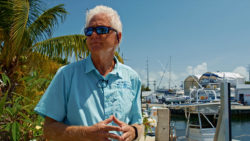 Bruce Popham joined the Florida Keys National Marine Sanctuary Advisory Council in 2006 and has represented the recreational fishing and the boating industries as the owner of Marathon Boatyard, one of the only designated Clean Boatyards in the Florida Keys. Bruce is also a long standing member of the Sanctuary Friends of the Florida Keys, and played an integral leadership role in transitioning that group into what is now the Florida Keys National Marine Sanctuary Foundation. During his time on the Florida Keys Sanctuary Advisory Council, he served as the Chair and helped the sanctuary and the council navigate important issues including the first comprehensive review of the Florida Keys National Marine Sanctuary’s boundaries, zones, regulations, and management plan. Bruce is an essential community liaison in the sanctuary’s Restoration Blueprint campaign, utilizing his long-standing reputation and relationships in the Florida Keys to garner additional support for the sanctuary, which is home to the only continental barrier reef in North America. Recently retired, Bruce remains committed to conservation and protection of the Florida Keys ecosystem, and a strong voice for marine protection across the country.
Bruce Popham joined the Florida Keys National Marine Sanctuary Advisory Council in 2006 and has represented the recreational fishing and the boating industries as the owner of Marathon Boatyard, one of the only designated Clean Boatyards in the Florida Keys. Bruce is also a long standing member of the Sanctuary Friends of the Florida Keys, and played an integral leadership role in transitioning that group into what is now the Florida Keys National Marine Sanctuary Foundation. During his time on the Florida Keys Sanctuary Advisory Council, he served as the Chair and helped the sanctuary and the council navigate important issues including the first comprehensive review of the Florida Keys National Marine Sanctuary’s boundaries, zones, regulations, and management plan. Bruce is an essential community liaison in the sanctuary’s Restoration Blueprint campaign, utilizing his long-standing reputation and relationships in the Florida Keys to garner additional support for the sanctuary, which is home to the only continental barrier reef in North America. Recently retired, Bruce remains committed to conservation and protection of the Florida Keys ecosystem, and a strong voice for marine protection across the country.
Fernando Calderón Gutiérrez
Flower Garden Banks National Marine Sanctuary
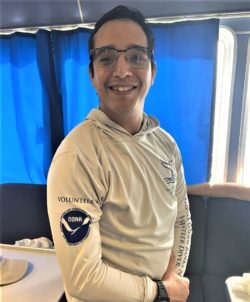 Fernando Calderón Gutiérrez is one of Flower Garden Banks National Marine Sanctuary’s first volunteer divers, attending the inaugural field training course in 2018. Outstanding candidates were selected to participate in a field training course to become NOAA divers and assist the sanctuary in dive operations. Fernando is currently a graduate student at Texas A&M University at Galveston, balancing course work, his own research, and teaching assistantships with volunteering for the sanctuary. In addition to his dedication to his education, he demonstrates dedication to the National Marine Sanctuary System, volunteering for many multi-day research cruises, training support, and education/outreach events in Flower Garden Banks. As a volunteer NOAA diver, he has participated in water quality cruises to maintain instrumentation, biological monitoring cruises to collect coral reef data, and provided invaluable deck support to ensure the safety of the dive team. He is always keen to learn more, and is willing and enthusiastic to help, often at very short notice, making him a volunteer Flower Garden Banks National Marine Sanctuary depends upon.
Fernando Calderón Gutiérrez is one of Flower Garden Banks National Marine Sanctuary’s first volunteer divers, attending the inaugural field training course in 2018. Outstanding candidates were selected to participate in a field training course to become NOAA divers and assist the sanctuary in dive operations. Fernando is currently a graduate student at Texas A&M University at Galveston, balancing course work, his own research, and teaching assistantships with volunteering for the sanctuary. In addition to his dedication to his education, he demonstrates dedication to the National Marine Sanctuary System, volunteering for many multi-day research cruises, training support, and education/outreach events in Flower Garden Banks. As a volunteer NOAA diver, he has participated in water quality cruises to maintain instrumentation, biological monitoring cruises to collect coral reef data, and provided invaluable deck support to ensure the safety of the dive team. He is always keen to learn more, and is willing and enthusiastic to help, often at very short notice, making him a volunteer Flower Garden Banks National Marine Sanctuary depends upon.
Bryan Mossing and Benjamin Curran
Gray’s Reef National Marine Sanctuary
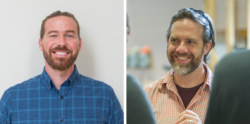 Professors Bryan Mossing and Benjamin Curran of Savannah Technical College volunteered to make the ambitious vision for a large exhibit for the Gray’s Reef Expo: Celebrating NOAA’s 50th Anniversary event a reality. Not only did the two professors offer to design, draft, and engineer a plan for the construction, but they enlisted their own Savannah Tech students to build the structure as class projects. Using it as a teaching tool, the professors led their students and some volunteers in building a 120-foot-long, 8-foot-tall curved exhibit that included 30 curving sections and 60 panels highlighting the wonders of the sanctuary. The project took several hundred man-hours, saving Gray’s Reef tens of thousands of dollars. Several Savannah tourist attractions are asking to borrow it as a temporary exhibit in their spaces. The community spirit that the professors demonstrated was infectious to students, some of whom continued to work on building the exhibit after their semester had ended. Further, the professors ensured that their classes learned about Gray’s Reef, which led one architectural drafting class to create mock-ups of the exhibit using Gray’s Reef imagery. Thanks to these two innovative and inspirational professors, Savannah Technical College created a quality product that will interpret the resources of Gray’s Reef National Marine Sanctuary for many years to come.
Professors Bryan Mossing and Benjamin Curran of Savannah Technical College volunteered to make the ambitious vision for a large exhibit for the Gray’s Reef Expo: Celebrating NOAA’s 50th Anniversary event a reality. Not only did the two professors offer to design, draft, and engineer a plan for the construction, but they enlisted their own Savannah Tech students to build the structure as class projects. Using it as a teaching tool, the professors led their students and some volunteers in building a 120-foot-long, 8-foot-tall curved exhibit that included 30 curving sections and 60 panels highlighting the wonders of the sanctuary. The project took several hundred man-hours, saving Gray’s Reef tens of thousands of dollars. Several Savannah tourist attractions are asking to borrow it as a temporary exhibit in their spaces. The community spirit that the professors demonstrated was infectious to students, some of whom continued to work on building the exhibit after their semester had ended. Further, the professors ensured that their classes learned about Gray’s Reef, which led one architectural drafting class to create mock-ups of the exhibit using Gray’s Reef imagery. Thanks to these two innovative and inspirational professors, Savannah Technical College created a quality product that will interpret the resources of Gray’s Reef National Marine Sanctuary for many years to come.
Zander Brennen and Wendy Niles
Greater Farallones National Marine Sanctuary
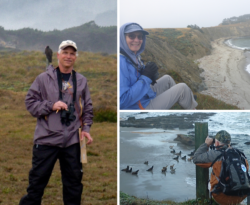
Zander Brennen and Wendy Niles have been surveying Greater Farallones National Marine Sanctuary beaches through the Beach Watch program since 2014. Although Berkeley residents, they travel all the way to Mendocino County, in the sanctuary’s northern area, to monitor their beach, traveling nearly 1,200 miles and contributing over 200 hours to the sanctuary. With intelligence and positive attitudes, they have mentored and inspired fellow volunteers, and have not missed a single survey in over five years. This innovative team has created learning tools for their fellow surveyors to help with species identification, including the legendary Gull Wing Cheat Sheet, used by hundreds of volunteers. They are true citizen scientists, collecting data on a pinniped haul-out in Mendocino County years before they even joined Beach Watch. They knew there was something special about a haul-out of hundreds of sea lions and elephants seals. They shared their decades of data with the sanctuary science team, who found they had documented a new elephant seal breeding colony not previously known to NOAA scientists. Aerial surveys of pinniped breeding colonies are usually conducted by NOAA during the summer months, long after elephant seal pups wean and move offshore to feed and mature. Thanks to Zander and Wendy, NOAA now has documentation for one of the northern-most breeding colonies for elephant seals along the West Coast.
Robert ‘Bob’ Gladden
Hawaiian Islands Humpback Whale National Marine Sanctuary
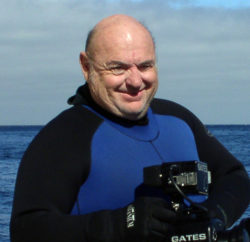 Robert ‘Bob’ Gladden, has been a primary player over the last decade maintaining our presence in Kona as an entanglement response and community outreach volunteer for Hawaiian Islands Humpback Whale National Marine Sanctuary. As a volunteer, he has kept the response team on the island of Hawai’i organized and helped maintain readiness. With his support, the sanctuary has done the highest number of large whale entanglement response training of any region (based on the 2017 and 2018 national reports). Bob Gladden built the sanctuary’s first underwater pole-camera system and came up with a whale tail for training that was duplicated on Maui, and is now shared with the West Coast and Mexico response networks. Bob also helped raise funds that supported whale disentanglement response and outreach efforts. He came up with the idea of using the training whale tail as part of a float during the Kona holiday parade illustrating the sanctuary-lead large whale entanglement response efforts. The idea has since been used for the Whale Day parade on Maui. Bob also assisted in the Waimea Ocean Film Festival and other outreach efforts. Bob’s award of the Hawaiian Islands Humpback Whale sanctuaryVolunteer of the Year isa tribute to his dedication and passion helping the sanctuary in its mission to protect humpback whales and their habitat.
Robert ‘Bob’ Gladden, has been a primary player over the last decade maintaining our presence in Kona as an entanglement response and community outreach volunteer for Hawaiian Islands Humpback Whale National Marine Sanctuary. As a volunteer, he has kept the response team on the island of Hawai’i organized and helped maintain readiness. With his support, the sanctuary has done the highest number of large whale entanglement response training of any region (based on the 2017 and 2018 national reports). Bob Gladden built the sanctuary’s first underwater pole-camera system and came up with a whale tail for training that was duplicated on Maui, and is now shared with the West Coast and Mexico response networks. Bob also helped raise funds that supported whale disentanglement response and outreach efforts. He came up with the idea of using the training whale tail as part of a float during the Kona holiday parade illustrating the sanctuary-lead large whale entanglement response efforts. The idea has since been used for the Whale Day parade on Maui. Bob also assisted in the Waimea Ocean Film Festival and other outreach efforts. Bob’s award of the Hawaiian Islands Humpback Whale sanctuaryVolunteer of the Year isa tribute to his dedication and passion helping the sanctuary in its mission to protect humpback whales and their habitat.
Arianna DiMucci
Monitor National Marine Sanctuary
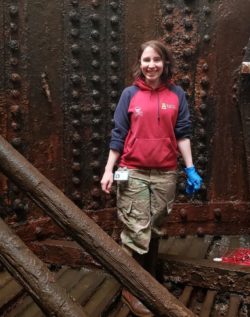 Arianna DiMucci is a five-year veteran of working with the conservation of underwater archaeological materials, which makes her an ideal volunteer for the Monitor National Marine Sanctuary’s cultural heritage preservation program with The Mariners’ Museum and Park. Arianna has provided invaluable support to the USS Monitor collection’s conservation program through active participation in multiple projects. In addition to taking on the treatment of two complex, non-separable, multi-material objects (a cannon rammer and a hammer), Arianna has been a full participant in team projects and public outreach events. In March of this year, she provided assistance during the necessary bore cleaning of USS Monitor’s two XI-inch Dahlgren shell guns, which was featured in The Washington Post. She helped with behind-the-scenes conservation laboratory tours, laboratory maintenance, object documentation, cleaning hull elements of the shipwreck using dry-ice blasting, and assisting with the re-support initiative of the ironclad’s iconic rotating gun turret in 2019. All these activities further the mission of Monitor National Marine Sanctuary and The Mariners’ Museum to preserve artifacts from USS Monitor, essential to telling the stories of the vessel and crew, and highlight the need for better understanding maritime cultural heritage.
Arianna DiMucci is a five-year veteran of working with the conservation of underwater archaeological materials, which makes her an ideal volunteer for the Monitor National Marine Sanctuary’s cultural heritage preservation program with The Mariners’ Museum and Park. Arianna has provided invaluable support to the USS Monitor collection’s conservation program through active participation in multiple projects. In addition to taking on the treatment of two complex, non-separable, multi-material objects (a cannon rammer and a hammer), Arianna has been a full participant in team projects and public outreach events. In March of this year, she provided assistance during the necessary bore cleaning of USS Monitor’s two XI-inch Dahlgren shell guns, which was featured in The Washington Post. She helped with behind-the-scenes conservation laboratory tours, laboratory maintenance, object documentation, cleaning hull elements of the shipwreck using dry-ice blasting, and assisting with the re-support initiative of the ironclad’s iconic rotating gun turret in 2019. All these activities further the mission of Monitor National Marine Sanctuary and The Mariners’ Museum to preserve artifacts from USS Monitor, essential to telling the stories of the vessel and crew, and highlight the need for better understanding maritime cultural heritage.
Kim Akeman
Monterey Bay National Marine Sanctuary
 Kim Akeman embodies the mission of Monterey Bay National Marine Sanctuary in her work as a Bay Net volunteer. She is devoted to educating and informing coastal visitors about marine life that inhabits Monterey Bay. Kim shows her devotion to harbor seals that reside along the Monterey Peninsula. By spending over a thousand hours each year, over the past 10 years, Kim makes a noticeable impact in the number of people that hear about the Monterey Bay sanctuary and the protections for harbor seals and other marine life. Kim keeps watch over the harbor seals that pup on Monterey Peninsula beaches by monitoring births, photographing moms and pups, and alerting local enforcement officials to issues concerning harbor seals.
Kim Akeman embodies the mission of Monterey Bay National Marine Sanctuary in her work as a Bay Net volunteer. She is devoted to educating and informing coastal visitors about marine life that inhabits Monterey Bay. Kim shows her devotion to harbor seals that reside along the Monterey Peninsula. By spending over a thousand hours each year, over the past 10 years, Kim makes a noticeable impact in the number of people that hear about the Monterey Bay sanctuary and the protections for harbor seals and other marine life. Kim keeps watch over the harbor seals that pup on Monterey Peninsula beaches by monitoring births, photographing moms and pups, and alerting local enforcement officials to issues concerning harbor seals.
Claire Cappelle
National Marine Sanctuary of American Samoa
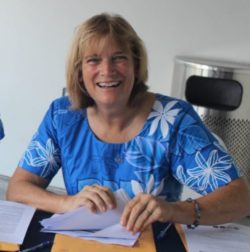 Claire Cappelle expressed her interest in volunteering with National Marine Sanctuary of American Samoa in early 2019. She assisted with various special events at the sanctuary including the Fautasi Heritage Symposium, Exploration Vessel Nautilus telepresence events, Get Into Your Sanctuary program, Fagota Mo Taeao Fishing Tournament, and the Remotely Operated Vehicle high school workshops and competitions. Her work includes interfacing with the public, assisting with event registrations, conducting trail checks with sanctuary staff, and research compilation. Claire has been a major help with archival research for maritime cultural landscape history which was used for the new exhibit in the rotunda room of the Tauese P.F. Sunia Ocean Center, and draft fautasi magazine. She visited the local public library and local newspaper company to pore through historical fautasi documents and articles, and has written narrative summaries now included in the Fautasi Heritage magazine. Overall, Claire’s time, attention to detail, willingness to support, and approachable attitude make her an invaluable asset to sanctuaries and are key in helping National Marine Sanctuary of American Samoa achieve its mission to understand and protect coastal ecosystems and cultural resources.
Claire Cappelle expressed her interest in volunteering with National Marine Sanctuary of American Samoa in early 2019. She assisted with various special events at the sanctuary including the Fautasi Heritage Symposium, Exploration Vessel Nautilus telepresence events, Get Into Your Sanctuary program, Fagota Mo Taeao Fishing Tournament, and the Remotely Operated Vehicle high school workshops and competitions. Her work includes interfacing with the public, assisting with event registrations, conducting trail checks with sanctuary staff, and research compilation. Claire has been a major help with archival research for maritime cultural landscape history which was used for the new exhibit in the rotunda room of the Tauese P.F. Sunia Ocean Center, and draft fautasi magazine. She visited the local public library and local newspaper company to pore through historical fautasi documents and articles, and has written narrative summaries now included in the Fautasi Heritage magazine. Overall, Claire’s time, attention to detail, willingness to support, and approachable attitude make her an invaluable asset to sanctuaries and are key in helping National Marine Sanctuary of American Samoa achieve its mission to understand and protect coastal ecosystems and cultural resources.
Dr. Jan Newton
Olympic Coast National Marine Sanctuary
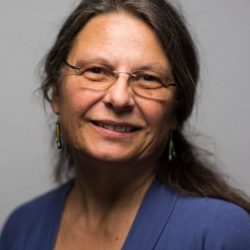 Dr. Jan Newton is the Senior Principal Oceanographer for the University of Washington’s Applied Physics Lab, the Executive Director and Principal Investigator of the Northwest Association of Networked Ocean Observing Systems, and Co-Chair for the Global Ocean Acidification Observing Network. She is an active researcher of Pacific Northwest ecosystems and joined the Olympic Coast National Marine Sanctuary Advisory Council as a way of sharing knowledge about marine ecosystems. Her hope is to enable protection of the Olympic Coast sanctuary through facilitating informed management decisions. She also enjoys recreating in the areas of coastal Washington where the sanctuary is located. She is a vocal champion of the designation of the sanctuary as a sentinel site for ocean acidification (OASeS), participating in the Washington State Blue Ribbon Panel on Ocean Acidification working group and the sanctuary’s OASeS working group which achieved the goal of OASeS classification for the sanctuary. She is an active supporter of the sanctuary’s mooring program, and encourages use of the dataset by fellow researchers and students. She also helped in expanding community outreach efforts through educational public presentations on sanctuary research topics ranging from ocean acidification to marine heatwaves.
Dr. Jan Newton is the Senior Principal Oceanographer for the University of Washington’s Applied Physics Lab, the Executive Director and Principal Investigator of the Northwest Association of Networked Ocean Observing Systems, and Co-Chair for the Global Ocean Acidification Observing Network. She is an active researcher of Pacific Northwest ecosystems and joined the Olympic Coast National Marine Sanctuary Advisory Council as a way of sharing knowledge about marine ecosystems. Her hope is to enable protection of the Olympic Coast sanctuary through facilitating informed management decisions. She also enjoys recreating in the areas of coastal Washington where the sanctuary is located. She is a vocal champion of the designation of the sanctuary as a sentinel site for ocean acidification (OASeS), participating in the Washington State Blue Ribbon Panel on Ocean Acidification working group and the sanctuary’s OASeS working group which achieved the goal of OASeS classification for the sanctuary. She is an active supporter of the sanctuary’s mooring program, and encourages use of the dataset by fellow researchers and students. She also helped in expanding community outreach efforts through educational public presentations on sanctuary research topics ranging from ocean acidification to marine heatwaves.
Kyla-Marie Turner
Papahānaumokuākea Marine National Monument
 Kyla-Marie Turner is a kānaka maoli (or Native Hawaiian), Kamehameha High School graduate, class of 2020. Kyla became a volunteer for Papahānaumokuākea Marine National Monument in June 2019 with goals to volunteer, greet visitors, assist with group education and events, and especially to help students from Kamehameha Schools learn how they could give back. Working with teachers from Kindergarten to12th grade, their students created art pieces that reflected their own success as leaders as a way to honor an elder in their life that influenced them greatly. She picked the theme “Child of Promise” with the cultural focus of relationship to land, ocean, and kuleana (responsibility) to place with the culminating exhibition. The focus is to bring the community into the center to learn about their cultural connections to the Monument in the Northwestern Hawaiian Islands. Kyla took care of every detail, from the program design, curating the exhibit, and asking the school to donate panels. Due to COVID 19, the opening of the exhibit was unfortunately canceled, but Kyla-Marie is already planning on a new exhibit event that will include Kamehameha Schools alumni for next year. She is a strong voice for Papahānaumokuākea. Kyla-Marie also trains other youth volunteers, building close relationships with students from other high schools. She is an excellent role model, very competent, organized and poised; a lead ambassador in the spirit of aloha.
Kyla-Marie Turner is a kānaka maoli (or Native Hawaiian), Kamehameha High School graduate, class of 2020. Kyla became a volunteer for Papahānaumokuākea Marine National Monument in June 2019 with goals to volunteer, greet visitors, assist with group education and events, and especially to help students from Kamehameha Schools learn how they could give back. Working with teachers from Kindergarten to12th grade, their students created art pieces that reflected their own success as leaders as a way to honor an elder in their life that influenced them greatly. She picked the theme “Child of Promise” with the cultural focus of relationship to land, ocean, and kuleana (responsibility) to place with the culminating exhibition. The focus is to bring the community into the center to learn about their cultural connections to the Monument in the Northwestern Hawaiian Islands. Kyla took care of every detail, from the program design, curating the exhibit, and asking the school to donate panels. Due to COVID 19, the opening of the exhibit was unfortunately canceled, but Kyla-Marie is already planning on a new exhibit event that will include Kamehameha Schools alumni for next year. She is a strong voice for Papahānaumokuākea. Kyla-Marie also trains other youth volunteers, building close relationships with students from other high schools. She is an excellent role model, very competent, organized and poised; a lead ambassador in the spirit of aloha.
Aurora Avallone
Stellwagen Bank National Marine Sanctuary
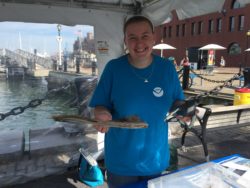 Aurora Avallone joined Stellwagen Bank National Marine Sanctuary’s volunteer program through the Gates Middle School Environmental Club when she was in seventh grade. A charismatic ambassador and natural leader, Aurora has taken on a number of volunteer roles and engaged tens of thousands of children and adults through sanctuary programs. As a high school sophomore, she focused her Girl Scout Silver Award project on increasing support for our national marine sanctuaries by creating the Sanctuary Sea Scouts program. She designed activities and trained students to run “shore to sanctuary” programs at a local beach, to help families understand how they impact the ocean and how important the ocean is in their lives. In the past year alone, Aurora has served as SAC Youth Primary Seat, Sanctuary Ambassador, Steering Committee spokesperson successfully advocating for the Town of Scituate to purchase coastal land, and Stellwagen Sanctuary Seabird Steward Program Assistant. Aurora’s dedicated efforts forward every part of Stellwagen’s mission, from increasing awareness, support, and protection, to making sanctuaries great places to work. She explains it simply and best: “I believe that if we teach young kids about the ocean, we will create lifelong protectors, advocates and lovers of the sea.”
Aurora Avallone joined Stellwagen Bank National Marine Sanctuary’s volunteer program through the Gates Middle School Environmental Club when she was in seventh grade. A charismatic ambassador and natural leader, Aurora has taken on a number of volunteer roles and engaged tens of thousands of children and adults through sanctuary programs. As a high school sophomore, she focused her Girl Scout Silver Award project on increasing support for our national marine sanctuaries by creating the Sanctuary Sea Scouts program. She designed activities and trained students to run “shore to sanctuary” programs at a local beach, to help families understand how they impact the ocean and how important the ocean is in their lives. In the past year alone, Aurora has served as SAC Youth Primary Seat, Sanctuary Ambassador, Steering Committee spokesperson successfully advocating for the Town of Scituate to purchase coastal land, and Stellwagen Sanctuary Seabird Steward Program Assistant. Aurora’s dedicated efforts forward every part of Stellwagen’s mission, from increasing awareness, support, and protection, to making sanctuaries great places to work. She explains it simply and best: “I believe that if we teach young kids about the ocean, we will create lifelong protectors, advocates and lovers of the sea.”
Al Moe
Thunder Bay National Marine Sanctuary
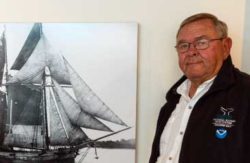 Al Moe is a passionate champion for Thunder Bay National Marine Sanctuary and the entire National Marine Sanctuary System. As a retired healthcare executive respected throughout Michigan, Al Moe’s financial and operations management experience and personal integrity, combined with his love for ocean and Great Lakes fishing, are critical to the success of the sanctuary, its Advisory Council, and Friends of Thunder Bay National Marine Sanctuary. With several new partnerships underway that will significantly expand the sanctuary’s Great Lakes regional presence, Al has been hands-on every step of the way. While Al has been volunteering at the sanctuary for more than 15 years, this past year, he supported multiple programs and projects coming to a crescendo at the same time. These included engine repairs to the Lady Michigan glass-bottom boat during prime tourist season, as well as securing a major property donation to the Friends of Thunder Bay from The Nature Conservancy to increase public access to several shallow shipwrecks, and community support for extensive development plans for the riverfront adjacent to the Great Lakes Maritime Heritage Center for water recreation and education.
Al Moe is a passionate champion for Thunder Bay National Marine Sanctuary and the entire National Marine Sanctuary System. As a retired healthcare executive respected throughout Michigan, Al Moe’s financial and operations management experience and personal integrity, combined with his love for ocean and Great Lakes fishing, are critical to the success of the sanctuary, its Advisory Council, and Friends of Thunder Bay National Marine Sanctuary. With several new partnerships underway that will significantly expand the sanctuary’s Great Lakes regional presence, Al has been hands-on every step of the way. While Al has been volunteering at the sanctuary for more than 15 years, this past year, he supported multiple programs and projects coming to a crescendo at the same time. These included engine repairs to the Lady Michigan glass-bottom boat during prime tourist season, as well as securing a major property donation to the Friends of Thunder Bay from The Nature Conservancy to increase public access to several shallow shipwrecks, and community support for extensive development plans for the riverfront adjacent to the Great Lakes Maritime Heritage Center for water recreation and education.
